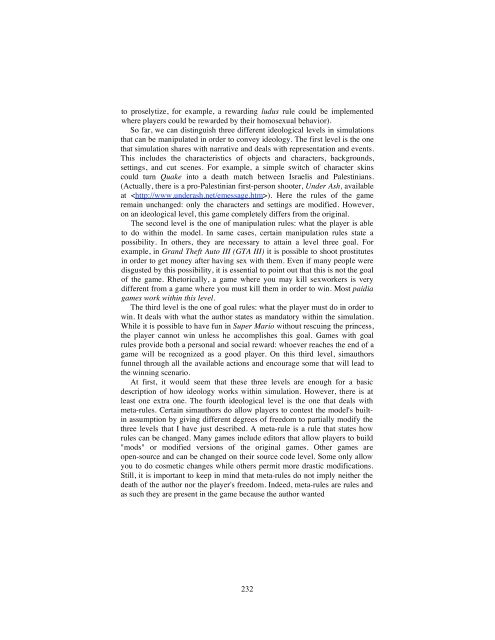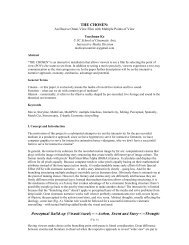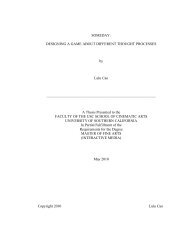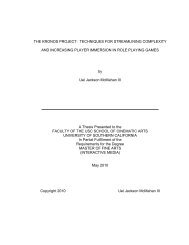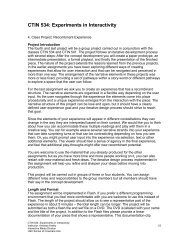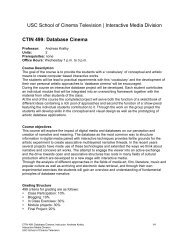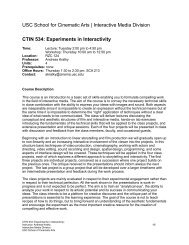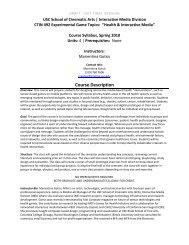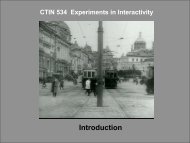Simulation versus Narrative - USC Interactive Media Division
Simulation versus Narrative - USC Interactive Media Division
Simulation versus Narrative - USC Interactive Media Division
- No tags were found...
You also want an ePaper? Increase the reach of your titles
YUMPU automatically turns print PDFs into web optimized ePapers that Google loves.
to proselytize, for example, a rewarding ludus rule could be implementedwhere players could be rewarded by their homosexual behavior).So far, we can distinguish three different ideological levels in simulationsthat can be manipulated in order to convey ideology. The first level is the onethat simulation shares with narrative and deals with representation and events.This includes the characteristics of objects and characters, backgrounds,settings, and cut scenes. For example, a simple switch of character skinscould turn Quake into a death match between Israelis and Palestinians.(Actually, there is a pro-Palestinian first-person shooter, Under Ash, availableat ). Here the rules of the gameremain unchanged: only the characters and settings are modified. However,on an ideological level, this game completely differs from the original.The second level is the one of manipulation rules: what the player is ableto do within the model. In same cases, certain manipulation rules state apossibility. In others, they are necessary to attain a level three goal. Forexample, in Grand Theft Auto III (GTA III) it is possible to shoot prostitutesin order to get money after having sex with them. Even if many people weredisgusted by this possibility, it is essential to point out that this is not the goalof the game. Rhetorically, a game where you may kill sexworkers is verydifferent from a game where you must kill them in order to win. Most paidiagames work within this level.The third level is the one of goal rules: what the player must do in order towin. It deals with what the author states as mandatory within the simulation.While it is possible to have fun in Super Mario without rescuing the princess,the player cannot win unless he accomplishes this goal. Games with goalrules provide both a personal and social reward: whoever reaches the end of agame will be recognized as a good player. On this third level, simauthorsfunnel through all the available actions and encourage some that will lead tothe winning scenario.At first, it would seem that these three levels are enough for a basicdescription of how ideology works within simulation. However, there is atleast one extra one. The fourth ideological level is the one that deals withmeta-rules. Certain simauthors do allow players to contest the model's builtinassumption by giving different degrees of freedom to partially modify thethree levels that I have just described. A meta-rule is a rule that states howrules can be changed. Many games include editors that allow players to build"mods" or modified versions of the original games. Other games areopen-source and can be changed on their source code level. Some only allowyou to do cosmetic changes while others permit more drastic modifications.Still, it is important to keep in mind that meta-rules do not imply neither thedeath of the author nor the player's freedom. Indeed, meta-rules are rules andas such they are present in the game because the author wanted232


